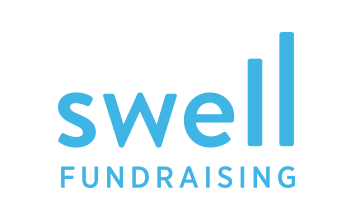While nonprofit organizations are struggling to maintain many of their operations during our global transition to hybrid programming, there is still one tool that hasn’t been negatively affected. In fact, if anything it has become simpler and more effective than ever.
That special tool is data, and it is one of the best strategies available to you to maximize your various marketing efforts.
By tracking, organizing, and analyzing the right data metrics, your organization no longer has to perform guesswork when brainstorming new marketing techniques, refining flawed strategies, and deciding which ones to scrap.
Furthermore, optimizing your marketing techniques should create a ripple effect that will positively impact the various critical campaigns that depend upon the success of your marketing efforts. With these data techniques, expect your fundraising, donor retention and acquisition, and other key operations to improve right alongside your marketing strategies.
Whether you’re trying to improve the promotion for your virtual fundraisers or revamp your direct mail appeals, data tracking will help you effectively refine all of your nonprofit marketing in the following key ways:
- Learn from previous marketing campaigns
- Optimize your communications
- Track the success of current campaigns
As critical engagements and campaigns are moved into a virtual space and data management systems grow more powerful with every passing year, now is the best time to jump into the world of data and infuse it into your nonprofit marketing strategies.
Learn from previous marketing campaigns
The first step to future success is to learn from your past failures. While your organization may want to forget about old marketing campaigns that may have missed the mark or didn’t perform as well as you’d hoped, these campaigns provide a rich history of data that could put your next marketing push on the fast track for success.
When analyzing your previous initiatives, we advise you to look across all of your multichannel campaigns and then select key metrics that you consider a solid measure of your qualitative goals. This gives you a baseline of success for these strategies and offers a point of reference for what to improve upon in your future campaigns.
Based on the wisdom of some of the top nonprofit marketing firms, we’ve compiled a few of the major metrics that you should assess from your past efforts:
- Distribution of revenue. In other words, which marketing pieces and initiatives brought in what percentage of your funding? Separate these campaigns by type, communication channel, and their weight in your total revenue, and then analyze how the marketing and promotion for these events differed. You will quickly find that seemingly innocuous differences in the manner and style of your advertisements may have played a larger role in their success than you anticipated. Record the unique attributes of the most successful and least successful campaigns, and tweak your marketing best practices accordingly.
- Level of Engagement. Engagement is an essential part of your organization’s success, namely in raising donor retention, encouraging acquisition, and ensuring long-lasting relationships between your organization and its donors. One way to measure engagement success is to analyze registration rates and attendance rates as well as non-attendees who donated to your various events. While registration suggests that your initial promotional materials were successful, attendance and/or donations illustrate how effective your pre-event communications and emails were in ensuring that donors follow through with their initial interest.
- Exposure and awareness. Particularly across your social media channels, you should pay attention to the number of reactions and views that your content received and how many linked posts were actually followed to their source. Reference these user reactions against your current donor records, and this provides a solid metric of how successful your campaigns were at both engaging your donors and exposing your content to new, potential supporters. You should also ask yourself how these promotions differed, visually and content-wise. Was there a particular way that you responded to users that also encouraged different reactions?
- Surveys and user responses. Data is not necessarily just figures and statistics. A precious form of qualitative data are the direct responses and opinions of your supporters. This may seem obvious, but we encourage you to take the time to really listen to what donors have had to say about your various marketing content and communication. Organize these responses by type and frequency, and then formulate goals to address the most major issues.
In order to carry out these past marketing analyses as efficiently and effectively as possible, your organization might consider enlisting the help of a fundraising or nonprofit marketing consultant. These seasoned professionals can help you to identify, track, and organize key performance indicators in your past marketing campaigns, and then create actionable goals to improve upon these techniques. This Meyer Partners guide to finding the right professional fundraising firm provides a strong launching off point to begin your search.
Optimize your communications
Just because a donor has previously pledged gifts to your cause does not mean that their future support is guaranteed. In order to turn the vast majority of one-time givers into loyal, recurring supporters, you’ll need to leverage your communications for maximum engagement.
Data provides the roadmap for this optimization. Consider some of the following techniques to effectively use and collect data to maximize your communication strategies:
- Segment donors. There are few faster ways to disengage donors than to fill their inboxes and mailboxes with messages that don’t interest them. Eventually, even opportunities that they might enjoy could be missed because they’ve gotten in the habit of ignoring your communications. Segment your donors by geographic information, personal demographics, and behaviors and engagements with your organization. You will then be able to better tailor individual donor communications with engaging event emails and other opportunities they would find personally interesting.
- Provide two-way channels. It will take more than simply addressing donors by name for them to feel truly acknowledged by your organization. Sending out post-event and end-of-the-year surveys, polls, and follow-up messages will not only increase donor engagement by giving them a platform to voice their opinions, but it will also create a funnel for critical data to be collected that can improve your marketing, communication, and event techniques.
- Utilize analytics. For example, the analytic strategy of prospect screening acts as a sort of background check to gauge the giving potential of your donors based on wealth and their engagement in high-value trading. By performing prospect screening, you can identify donors who may have the capacity to give again, become recurring or medium-level givers, or even become major donors for your organization. Predictive modeling is another analytic tool that evaluates your donor behavior and provides recommendations on those likely to respond. With these tools, you can then carefully target your communications according to these metrics of donor potential.
With all the intense focus that’s put on acquiring new donors, sometimes nonprofits tend to neglect the precious, loyal supporters that they already have. With these data-driven communication techniques, you will not only boost donor retention, but enrich and personalize the overall donor experience for every one of your supporters.
Track the success of current campaigns
You don’t have to wait until the end of your campaign to measure its performance. In fact, gauging the success of campaigns as they unfold is a great way to tweak and improve underperforming strategies before they fail.
That being said, measuring something as abstract and general as the “success” of an ongoing marketing initiative can be tricky. Establishing the right KPIs is the key to understanding which initiatives are excelling or failing and in what ways.
Here are some of the most essential KPIs to reference when analyzing your current marketing campaigns:
- Website visits and page dwell time. Your nonprofit website is one of your greatest marketing tools, and tracking user activity on your site will both help to improve the quality of your site and boost your other engagement, design, marketing techniques. For example, website visit rates will inform you how much exposure and attention your platform is receiving, while dwell time will clue you in to what style and form of content is most effectively capturing the attention of users.
- Donation form data. Critical donor data such as giving amounts, frequency of giving, and alternate giving methods like matching gift or membership programs are all collected by your donation form. This information can be used to further personalize your ongoing donation appeals and communications, zero in on donors who are more open to giving, and share relevant event information or program resources.
- Email non-openers. As important as it is to be aware of what messages donors are engaged by, it’s equally essential that your team keeps a record of messages with high non-opener rates. According to 360 MatchPro’s fundraising statistics, the average email open rate for nonprofits sits at 25.2%. With this in mind, your team should examine both your rate of non-openers relative to this figure, as well as what types of messages are dragging down your own average. This indicates that there is something critically wrong with the header or subject of these messages, and it gives you the opportunity to reference successful messages and pivot your campaign strategies accordingly.
- Direct mail responses. Your digital outreach tools shouldn’t be your only marketing strategy at play. Direct mail continues to be a highly effective and particularly engaging method of communication that can be adopted for a fuller, well-rounded multi-channel marketing approach. Be mindful to record which messages received the highest frequency of responses, whether they be event registration confirmations or donations.
With these intuitive metrics in place, your team should be able to exercise a critical level of insight and control over your current campaigns. You can intelligently adjust and fine tune your strategies as they unfold, steering clear of failed initiatives right as they begin to take shape.
If your own nonprofit has suffered serious losses in donor engagement, retention, and acquisition this year or last, rest easy knowing that you’re not alone. Our communication and engagement landscape has been radically changed by our global health crisis. Fortunately, there is still much you can do to both maintain and even strengthen your operations in the face of these unique challenges.
With these data-driven strategies as your guide, we are confident that your own nonprofit organization will soon be able to navigate your marketing operations with an ease, grace, and confidence like never before.

Guest Author: Bonnie Meyer
Bonnie brings to her role at Meyer Partners more than 30 years of fundraising experience, with aspecial emphasis in multimedia approaches to new don
or acquisition and development. Her expertise encompasses several facets of direct response fundraising, including copy writing and creative direction, market research, strategic planning, and comprehensive results analysis.




